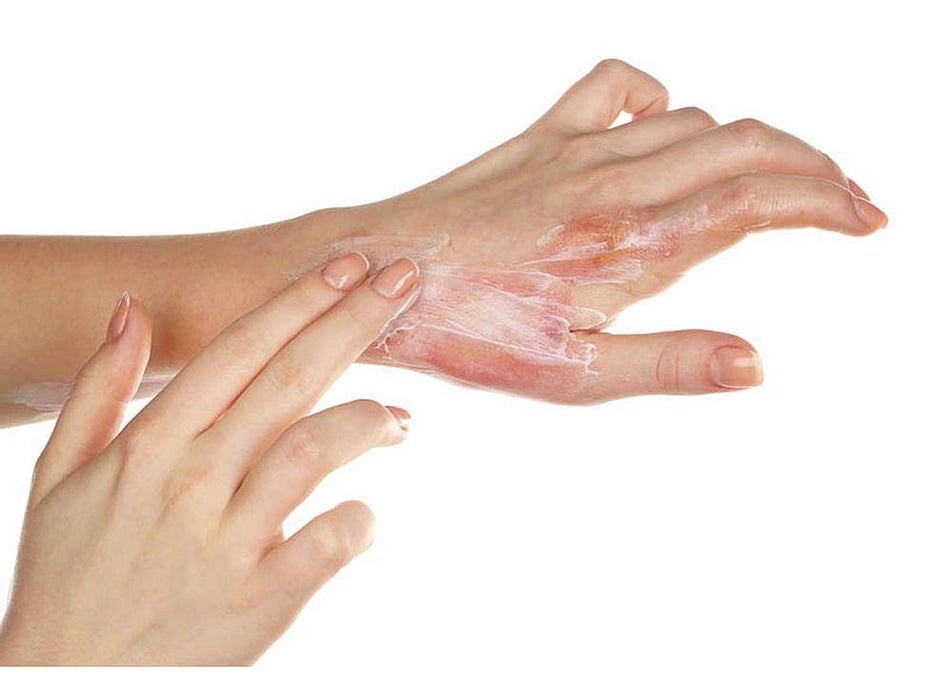How to Treat a Burn, According to a Doctor

Have you suffered a burn, and you're not sure what to do next?
Here's advice from an emergency room doctor about what you should — and shouldn’t — do if you have a mild, moderate or severe burn. Plus, discover pain relief options for each, and how to handle chemical burns and burn blisters.
How to treat a burn
Mild or moderate burns
A mild burn is called a first-degree burn, and it’s usually caused by a sunburn. The Cleveland Clinic says it affects just the top layer of your skin. You might notice red skin and low-level pain with this type of burn.
“First-degree burns can be treated with aloe vera, similar lotions or salves,” said Dr. Patrick McHugh, a Cleveland Clinic emergency medicine specialist.
A second-degree burn can be mild or moderate. You might get a second-degree burn from things like hot objects, flames from a stove, boiling water and even some chemicals.
“If a burn turns into a blister, this indicates that the burn is a second-degree burn. Blisters are common with these types of burns,” McHugh explained.
In addition to blisters, the Cleveland Clinic says you might notice pain, peeling skin, deep red to brown coloring and moist, shiny skin.
“Second-degree burns do require evaluation by your primary care physician or an emergency department physician,” McHugh noted.
Serious burns
The Cleveland Clinic says that the one thing that differentiates third-degree (serious) burns from first- and second-degree burns is that they won’t turn white when you press on them. You also won’t feel pain right away because your nerves are damaged.
These types of burns can be caused by flames, chemicals, hot objects, electricity, boiling water, extremely cold substances and radiation. They affect the top and middle layers of your skin, the fatty skin underneath, sweat glands, hair follicles and nerve endings. Even more serious burns can reach down to tendons, subcutaneous fat, muscles and bone.
You might notice a leathery look to your skin, swelling, dryness and red, black or white discoloration with third-degree burns.
McHugh said that you should not try to do anything yourself for a more serious burn.
“There is a great chance of significant infection, scarring or worsening medical conditions if the burn is not handled correctly by a trained medical professional,” he explained.
Chemical burns
Chemical burns are mild to severe burns that are caused by a chemical substance. The Cleveland Clinic says that workers who handle chemicals or young children who touch or swallow things like detergent or other cleaning products might be at risk.
Chemical burns can be more serious than non-chemical burns because they tend to linger on the skin and continue doing damage. Symptoms of chemical skin burns include:
- Swelling
- Blisters
- Red, discolored, peeling and/or cracked skin
- Pain
- Blurry vision, redness or stinging of the eyes
- Blindness
For chemical burns caused by swallowing substances, you may notice:
- Chest, mouth or throat pain
- Cough
- Difficulty speaking or breathing
- Airway swelling
- Nausea and vomiting
If you receive a chemical burn, it’s important to contact emergency services immediately. You should also use gloves to remove any affected clothing if possible and wipe away dried chemicals from your skin. Finally, rinse the area with water (or drink water if the chemical was swallowed) while you await medical care.
Pain relief for burns
“Ibuprofen helps with the pain from first-degree burns as well [as aloe vera or similar salves],” said McHugh. “For second-degree burns that have blisters, or burns that are worse, medical care should be the next step, and pain medications are usually prescribed.”
The Cleveland Clinic also recommends heading straight to the emergency room for more severe burns, where a pain management plan can be discussed.
How to treat a burn blister
McHugh and the Cleveland Clinic said for a burn blister:
- Rinse it with cool (not cold) running water from a sink or faucet
- Use bottled water if clean running water isn’t available
- Go to your doctor or urgent care center as soon as possible to get it checked out
What not to do for burns
“Second-degree burns with blisters should never have the blisters popped open… it is dangerous to pop open a blister as infection can set in quickly,” said McHugh. “It is also dangerous to put ice on burns.”
According to the Cleveland Clinic, you should also avoid:
- Using ointments or salves for second- or third-degree burns because they stop heat from being released
- Putting lake or stream water on the burn, since it might be full of bacteria that can cause infection
- Pulling off clothing that’s stuck to a burn
Related Posts
Lead Toxin Concerns Spur Recall of Toddler Sippy Cups
MONDAY, Nov. 28, 2022 (HealthDay News) -- Parents whose toddlers use certain...
Which Diets Really Raise Your Life Span? Two Come Out on Top
MONDAY, April 3, 2023 (HealthDay News) -- People at risk of heart disease could...
Muchos estadounidenses con seguro están a tan solo una lesión de la bancarrota, según un estudio
MARTES, 15 de noviembre de 2022 (HealthDay News) -- Uno de cada 5 adultos...
Vaccination Ups Infection-Acquired Immunity Against SARS-CoV-2
TUESDAY, March 1, 2022 (HealthDay News) -- Two doses of BNT162b2 vaccine are...
